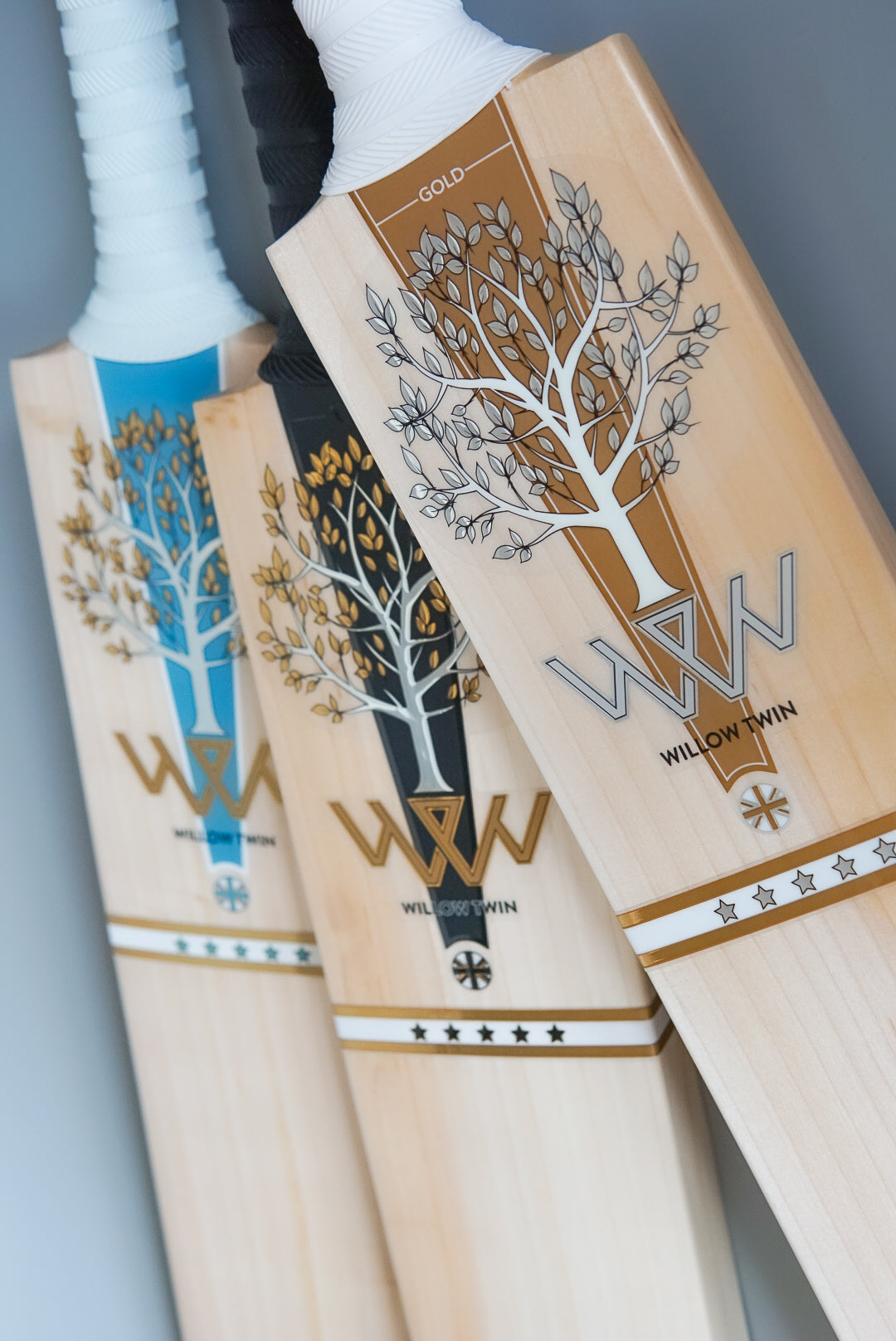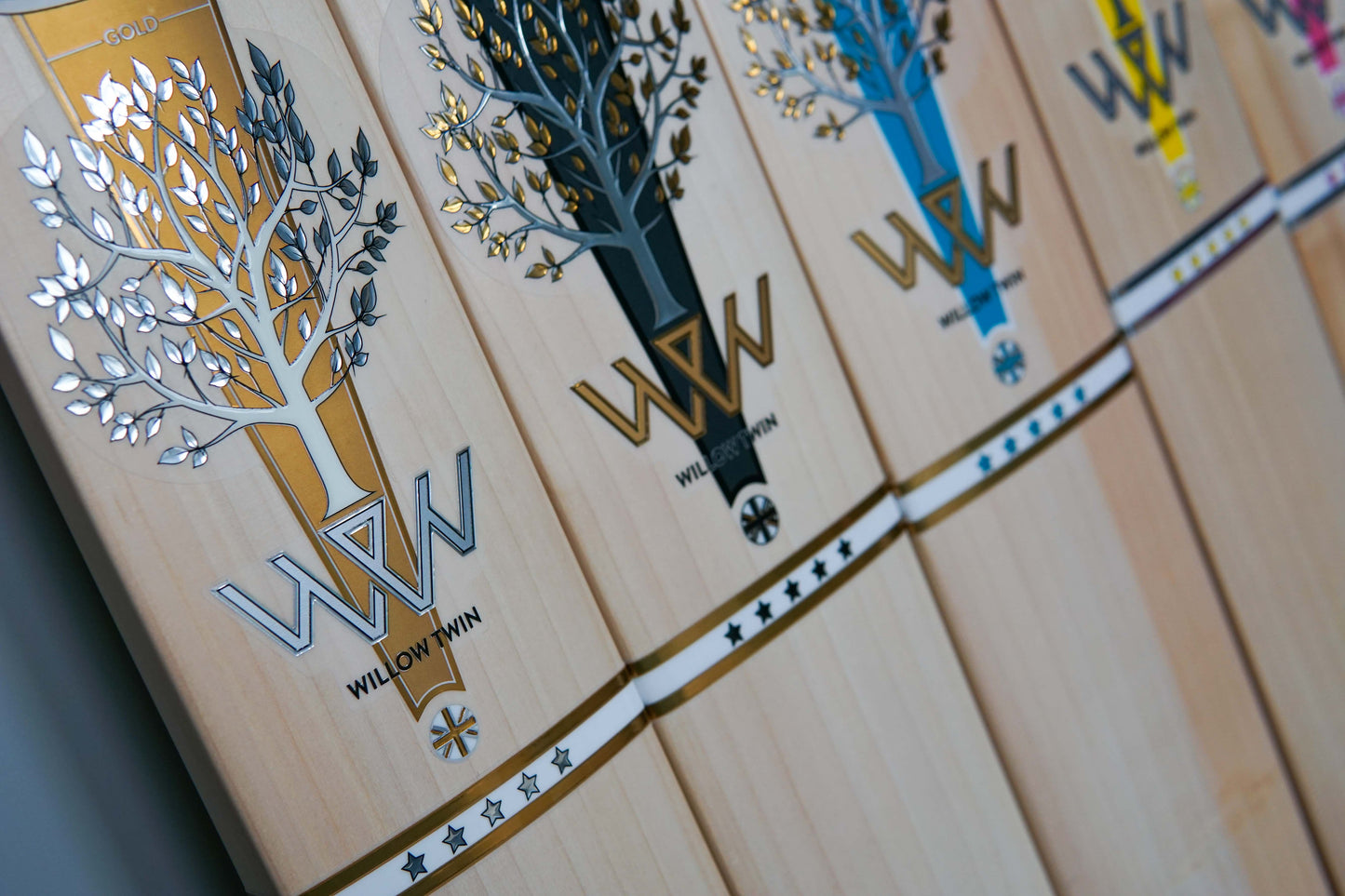Are you wondering if your cricket bat can be repaired? At Willow Twin we know that cricket bats are more than just pieces of willow, they’re an extension of your game and of your style. That is why we take so much care in crafting our bats to ensure they last as long as possible.
Unfortunately, general wear and tear as well as the effects of poor quality balls, mistimed shots and yorkers can cause various types of damage that can affect the performance of your bat.
Knowing how to identify and repair damage to your cricket bat is key to keeping your bat in top condition. In this guide, we’ll take a look at the different types of cricket bat damage and how to address them. We’ll cover everything from simple cosmetic damage to more serious damage that requires more extensive repairs. We’ll also discuss how to prevent damage to your cricket bat in the first place. Armed with this information, you can keep your cricket bat performing at its best for years to come.
Different types of cricket bat damage
Surface Cracks
Surface cracks on the bat face are the most common type of damage that a cricket bat can sustain. They are nothing to worry about and often arise with early use of the bat with a hard ball. The best way to prevent them is to use an anti-scuff sheet and to make sure that you give your bat is well knocked in prior to use. If you have large surface cracks this can be glued and an anti-scuff sheet applied.
Denting
Denting can be caused by a variety of factors such as poor quality cricket balls or not being stored correctly. The best way to prevent denting is to make sure that you use high quality cricket balls and to store your bat correctly within a bat sleeve.
Edge Chips
Edge chips are also a common type of damage that a cricket bat can suffer. Typically this occurs when the edges of the bat have not been knocked in sufficiently or are unprotected. In order to prevent chips to the edge, you should particularly focus the knocking in process on the edges, to the point where they are slightly rounded. You can then add fibre glass tape down the edges of the bat, for further protection.
Toe Splits
Toe splits are more serious than surface cracks and can be more challenging to repair. Toe splits are caused by the toe of the cricket bat being weakened over time and can be due to a variety of factors such as a poor knocking in process, an unsuitable cricket ball, or even a lack of maintenance. Often the actual split occurs when on the receiving end of a yorker. A toe split would be classed a major damage and is best to be repaired professionally.
Handle Cracking
Handle cracking is another type of damage that a cricket bat can suffer. This usually arises from excessive use, but does not result in the end of the cricket bat. The best way to repair it is to get the handle replaced. This involves carefully removing the old handle from the bat splice and fitting a new one. This is glued, shaped and placed into the splice.
How often should I get my cricket bat refurbished?
It is recommended that you get your cricket bat refurbished at least once every two seasons. This is important to ensure that your bat remains in good condition and that any potential problems are addressed before they become more serious. Refurbishing will also help to extend the life of your bat, so it is worth doing when necessary.
Willow Twin's cricket bat refurbishment service
At Willow Twin we offer a cricket bat repair and refurbishment service open to all brands of cricket bat. Whether you’re dealing with minor or major damage or a rehandling, we can help repair your bat and get it back to its best in no time. We will also resticker your bat with beautiful Willow Twin decals as part of the service.
We want you to get the most out of your cricket bat, which is why we’re here to help when it needs a bit of love. For more information on our cricket bat refurbishment and re-handling services, please get in touch with us today.




